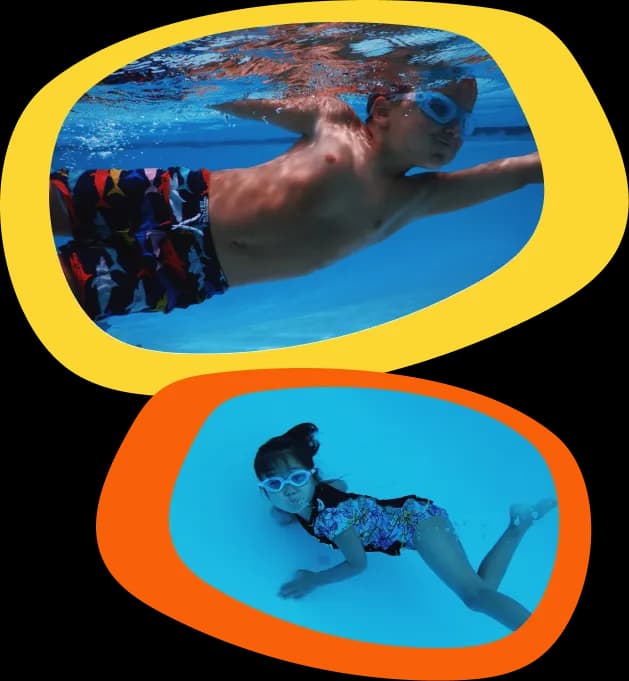What are the Benefits of Aquatic Therapy

Written by Megan Mormile — 4 min read

Those who can’t, can in the water! An often-overlooked aspect of rehabilitating an injury or getting in shape can be right in your backyard pool or community center.
Aquatic therapy is a form of exercise done in the water to reach physical rehabilitation or exercise performance goals. Water exercise therapy can be performed in a variety of warm water settings, such as physical therapy clinics, gyms, home pools and community centers.
Benefit #1: People who are injured, disabled, or otherwise incapable of performing exercise on land may successfully do so in the water.
Research shows aquatic therapy to be beneficial in the treatment of varying conditions, such as orthopedic injury, spinal cord damage, and chronic pain. Exercising on land can be difficult for many with commodities or health conditions, and aquatic therapy has thus risen in popularity as an easily accessible method of cross-training and facilitation of fitness in general populations.
Benefit #2: Water helps to displace your weight, leading to a decrease in joint compression forces.
Aquatic exercise or rehabilitating in water takes advantage of buoyancy, which is the upward force in water that counteracts gravity. In simple terms, this means that when you are in water, you weigh less, and are able to do more. This is especially helpful for populations struggling with arthritis or obesity, who may experience discomfort exercising on land or land based therapy.
Buoyancy helps to decrease joint compression forces on the body, meaning that when you exercise in water, your body isn’t experiencing forces it would normally when exercising on land.
After suffering an injury, you may be able to start exercising earlier and more intensely in the aquatic environment than you would normally. Muscle memory is an important aspect to gaining strength back after an injury, and getting reps in the pool will help to preserve strength while working through the healing process.
Benefit #3: Exercising in the pool helps with pain perception and stability.
Water therapy is a fantastic tool for creating a pain-free environment. As aforementioned, water assists to counteract the forces that we would normally experience exercising on land. This allows for greater success and strength gains during rehabilitation or exercise.
In essence, our brain starts to understand that “painful” motions aren’t a threat in the water.
The restive nature of water also allows for the opportunity for increased joint stability. Water has twelve times the resistance than air, and moving through water allows more opportunity to control through a range of motion. This leads to more secure movement patterns after an injury, especially in the lower body, where restoration of balance is important!
Benefit #4: Water-based exercise allows restoration of range of motion and reduction of swelling.
One of the biggest hang-ups after suffering an injury is gaining back range of motion. Let’s use an ankle sprain as an example. When you roll your ankle off the curb and sprain the ligaments, a typical response is a lot of swelling and stiffness in the ankle. It may be painful to walk or move the ankle through its normal range of motion. This is where doing some work in the pool may be very helpful!
Hydrostatic pressure of water provides a unique benefit in that it can counteract swelling that can form on injured areas of the body.
In our ankle sprain example, working different exercises in the water may be more beneficial than on land because the pressure of the water can work to flush out the swelling. Reducing swelling will lead to decreased pain and increased range of motion- and in turn, a quicker recovery.
Benefit #5: Aquatic therapy helps to prevent cardiorespiratory deconditioning.
In addition to allowing for early intervention after an injury, exercising in the water also provides a unique cardiovascular benefit. Hydrostatic pressure can help to counteract swelling in an injured area; however, it also has an internal advantage.
Hydrostatic pressure enhances venous return, allowing for greater cardiovascular efficiency.
Due to increased pressure, your heart has to work slightly harder to accomplish the same goal as it would on land. Over time, this will help to lower your overall blood pressure, and strengthen the heart. Working in warmer water also allows for muscle relaxation and vasodilation (increased blood flow), sending more blood to the injured area and helping to accelerate healing.
Benefit #6: Aquatic therapy provides a psychological benefit to those struggling with success on land.
The ability to exercise in a setting with minimal discomfort and a sense of security gives individuals a sense of accomplishment and increased motivation to reach their goals. Experiencing success in an aquatic environment drives motivation, confidence, and morale.
For many struggling with an injury or health condition, exercising in the water allows them to give an intense effort without fear of re-injury or judgement. Exercise classes in the water allow for a supportive team atmosphere, which will further drive motivation and perception of progress.
There may be certain conditions that advise against using aquatic therapy as an exercise program.
Be sure to consult your doctor before starting any new exercise program. Aquatic therapy should always be performed under the guidance of a trained health professional, such as a physical therapist or athletic trainer.
Contraindications to aquatic therapy include:
Written by: Megan Mormile
Swim Instructor in Orlando, FL
Megan is a Certified Athletic Trainer and Swim Instructor. She has taught swim lessons for over ten years, and currently specializes in the rehabilitation of athletes and general populations. Megan loves the connections she forms with students and finds joy in watching their progress in learning to swim and enjoy the water. Megan enjoys the challenge of swim instruction and aquatic rehabilitation for various ages, and currently works as an Athletic Trainer in the high school setting. She loves spending time outside in the sunshine!
Megan currently lives in Orlando, FL.
Share on socials




